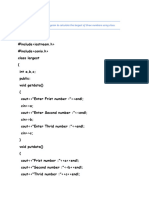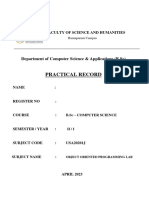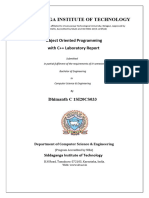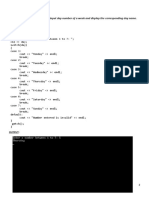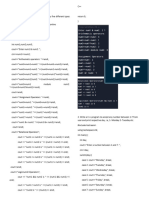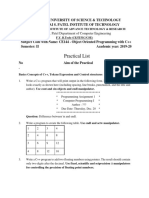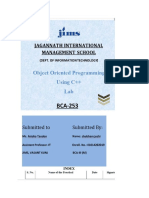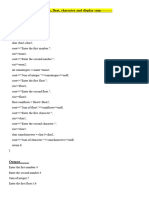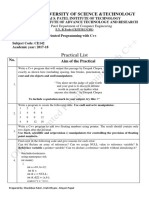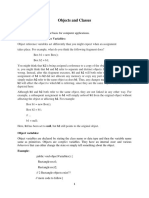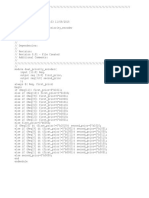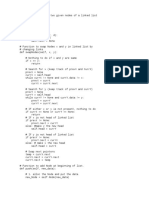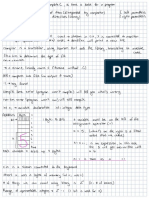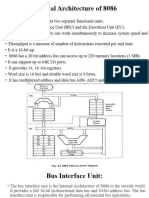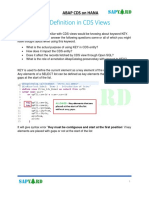0% found this document useful (0 votes)
31 views20 pagesSAMPLE C++ Programs
The document contains multiple C++ program examples demonstrating various programming concepts such as classes, functions, loops, and memory management. Each example includes code snippets that illustrate how to implement specific functionalities, such as calculating averages, swapping values, and handling user input. The programs cover a wide range of topics suitable for learning and practicing C++ programming.
Uploaded by
bejdiptangshu2017Copyright
© © All Rights Reserved
We take content rights seriously. If you suspect this is your content, claim it here.
Available Formats
Download as PDF, TXT or read online on Scribd
0% found this document useful (0 votes)
31 views20 pagesSAMPLE C++ Programs
The document contains multiple C++ program examples demonstrating various programming concepts such as classes, functions, loops, and memory management. Each example includes code snippets that illustrate how to implement specific functionalities, such as calculating averages, swapping values, and handling user input. The programs cover a wide range of topics suitable for learning and practicing C++ programming.
Uploaded by
bejdiptangshu2017Copyright
© © All Rights Reserved
We take content rights seriously. If you suspect this is your content, claim it here.
Available Formats
Download as PDF, TXT or read online on Scribd
/ 20




